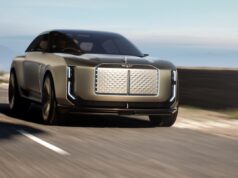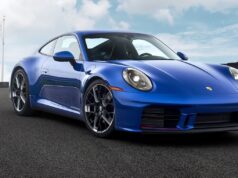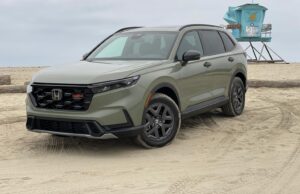
The redesigned 2009 Acura RL has received the Insurance Institute for Highway Safety’s Top Safety pick award.
In order to qualify for the award a vehicle must earn the highest rating of good in the Institute’s front, side, and rear tests and be equipped with electronic stability control.
The 2009 RL improved in the rear crash tests in which the 2005-08 model only received a marginal rating.
The 2009 RL is already in showrooms and starts at $46,280. It is powered by a 300 horsepower 3.7L V6 that is mated to Acura’s Super-Handling All-Wheel-Drive system.
It may be safe, but can you get over that front end?
PRESS RELEASE:
Acura RL wins TOP SAFETY PICK award; seat/head restraint combination improves to good
ARLINGTON, VA — The 2009 Acura RL, a large luxury car, earns the Insurance Institute for Highway Safety’s TOP SAFETY PICK award. Winners afford superior overall crash protection among the vehicles in their classes. To qualify, a vehicle must earn the highest rating of good in the Institute’s front, side, and rear tests and be equipped with electronic stability control.
“Criteria to win are tough because TOP SAFETY PICK is intended to drive continued improvements such as good crash test ratings and rapid addition of electronic stability control, which is standard equipment on the RL,” says Institute president Adrian Lund. “Recognizing vehicles at the head of the class for safety helps consumers distinguish the best overall choices without having to sort through multiple test results.”
The RL is the fourth Acura and ninth model from Honda to earn TOP SAFETY PICK.
Better protection in rear crashes: Honda redesigned the RL’s seat/head restraints to improve the rating for protection in rear crashes from marginal for 2005-08 models to good for the 2009. “You don’t know what kind of crash you’re going to be in,” Lund says, “so it’s important to choose a vehicle that will protect you in all kinds of crashes.”
In 2007 the Institute made the criteria to earn TOP SAFETY PICK tougher by adding a requirement — winners must be equipped with electronic stability control (ESC). Known by different names and called Vehicle Stability Assist on the RL, ESC helps drivers maintain control in the worst situation — loss of control at high speed — by engaging automatically when it senses vehicle instability and helping to bring a vehicle back in the intended line of travel. ESC lowers the risk of a fatal single-vehicle crash by about half. It lowers the risk of a fatal rollover crash by as much as 80 percent.
The RL is available with other crash avoidance features such as a forward collision warning, emergency brake assist, and adaptive headlights. The Institute recently evaluated the possible benefits of these features (see Status Report, April 17, 2008). The system with the most potential is forward collision warning. On the RL, depending on the closing rate, the system may first sound an alarm and flash a light to warn the driver of a hazard. Then safety belts are tightened, and if a crash is imminent brakes are applied with progressively more pressure. In an urgent situation, the system may apply heavy braking, tighten the safety belt, and alert the driver immediately. Such systems could be relevant to more than 2 million frontal crashes each year.
How vehicles are evaluated: The Institute’s frontal crashworthiness evaluations are based on results of 40 mph frontal offset crash tests. Each vehicle’s overall evaluation is based on measurements of intrusion into the occupant compartment, injury measures recorded on a Hybrid III dummy in the driver seat, and analysis of slow-motion film to assess how well the restraint system controlled dummy movement during the test.
Side evaluations are based on performance in a crash test in which the side of a vehicle is struck by a barrier moving at 31 mph. The barrier represents the front end of a pickup or SUV. Ratings reflect injury measures recorded on two instrumented SID-IIs dummies, assessment of head protection countermeasures, and the vehicle’s structural performance during the impact.
Rear crash protection is rated according to a two-step procedure. Starting points for the ratings are measurements of head restraint geometry — the height of a restraint and its horizontal distance behind the back of the head of an average-size man. Seat/head restraints with good or acceptable geometry are tested dynamically using a dummy that measures forces on the neck.








